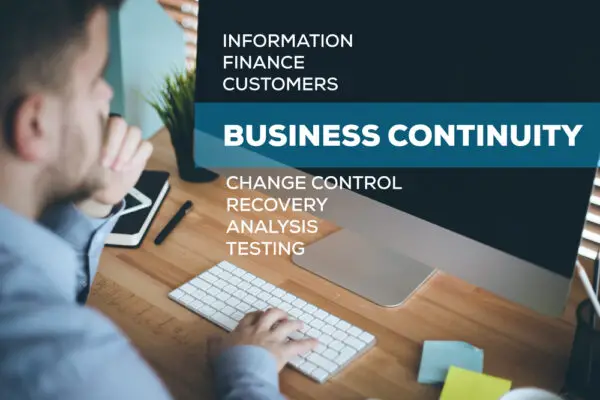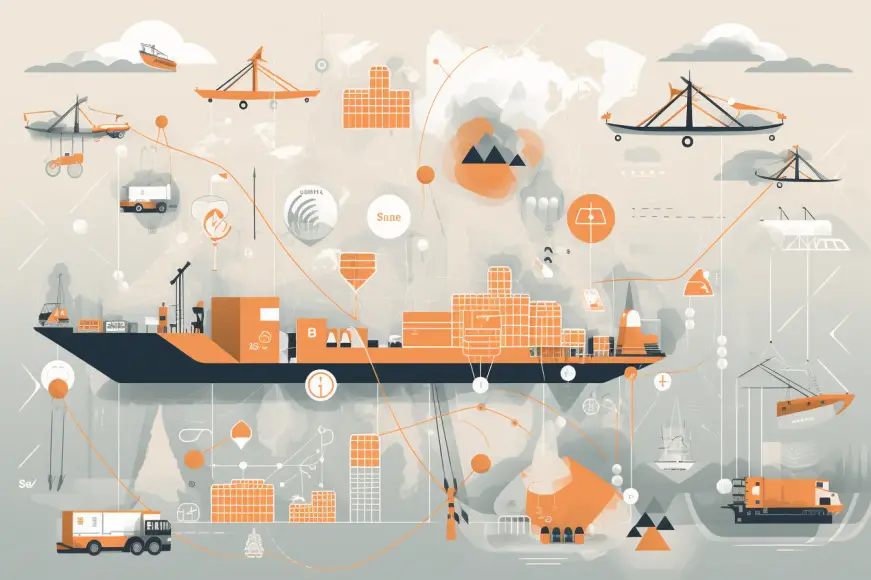Supply Chain Resilience is the ability of a supply chain to prepare for, respond to, and recover from a potential disruption, returning to its original state or moving to a new, more desirable state in order to increase its customer service, market share, and financial performance.
It’s about ensuring a business can maintain or quickly resume critical operations when disruptions occur.
Disruptions can take many forms, including natural disasters (like earthquakes, floods, or hurricanes), political instability, trade disputes, cyber attacks, or even something as globally impactful as a pandemic.
Key components of supply chain resilience include:
Flexibility: This means being able to change procedures or suppliers quickly in response to a disruption. It may involve having multiple suppliers for critical goods or services, or being able to modify production processes.
Visibility: This means having transparency throughout the supply chain. This can allow organizations to anticipate and manage disruptions before they become critical.
Collaboration: Working closely with suppliers, customers, and other stakeholders can help businesses anticipate potential disruptions and respond effectively when they occur.
Risk Management: This involves identifying potential risks and disruptions, assessing their potential impact, and implementing strategies to manage them.
Recovery: Having strategies and plans in place to recover from disruptions as quickly as possible is essential for supply chain resilience.
Agility: This refers to the ability to react quickly and effectively to sudden changes or disruptions.
The goal of supply chain resilience is not just to survive disruptions, but to adapt and grow stronger from these experiences, increasing competitive advantage and long-term sustainability.
In today’s world of global commerce, businesses rely heavily on their supply chains to deliver goods and services to customers. However, disruptions can occur at any stage of the supply chain, from sourcing raw materials to delivering finished products.
These disruptions can have far-reaching consequences, including lost sales, reputational damage, and financial losses.
Businesses that prioritize building resilient supply chains are better equipped to handle unexpected events such as natural disasters, geopolitical conflicts, or pandemics like the one we’re currently facing.
In this article, we’ll explore what exactly is meant by ‘supply chain resilience,’ why it matters for businesses, and how companies can improve their own resilience in an ever-changing world.

Defining Supply Chain Resilience
Resilience is not just about bouncing back from these disruptions but also includes the ability to adapt and transform to meet new challenges.
There are several key characteristics and features that are commonly associated with resilient supply chains. First and foremost, they prioritize risk management and adopt strategies that aim to prevent or minimize potential disruptions.
They also have strong communication channels both within their organizations and with external partners in order to quickly respond to changes in the environment. Additionally, resilient supply chains tend to be flexible and agile, allowing them to pivot quickly when necessary.
Examples of challenges faced by organizations trying to build resilient supply chains include balancing cost efficiencies with risk management investments, identifying vulnerabilities within complex global networks of suppliers, and managing information flows across multiple stakeholders with varying levels of visibility into the end-to-end process.
Despite these challenges, investing in building a resilient supply chain can offer significant benefits including reduced disruption costs, improved customer satisfaction due to consistent delivery performance even during challenging times, enhanced brand reputation for reliability during crises, among others.
Building a resilient supply chain requires ongoing effort and investment in technology systems, risk management processes, relationship building with suppliers and other partners along the value chain.
However it is essential for businesses operating in today’s increasingly volatile world where disruptions are becoming more frequent regardless of their origin or type. whether they be natural disasters or cyber-attacks – so that companies can continue delivering products/services uninterrupted while ensuring customer satisfaction remains high throughout any such eventuality.
Importance of Supply Chain Resilience for Businesses
Supply chain disruptions, such as natural disasters, political instability, and global pandemics, have become increasingly common occurrences that can significantly impact any business’s bottom line.
Business Continuity: Ensuring a reliable supply of goods and services is crucial for maintaining operations, satisfying customer demand, and keeping commitments to other stakeholders. Supply chain disruptions can severely impact a business’s ability to operate effectively, leading to lost sales, increased costs, and reputational damage.
Risk Management: Supply chains can be exposed to a wide range of risks, from natural disasters to political instability to cybersecurity threats. Developing a resilient supply chain is a key part of managing these risks and ensuring that the business can continue to function in the face of unexpected events.
Competitive Advantage: A resilient supply chain can be a significant competitive advantage. Companies that can maintain operations and continue to serve customers during disruptions may gain market share and strengthen their position relative to competitors.
Financial Stability: Disruptions to the supply chain can have significant financial impacts, from increased costs due to rush orders and overtime to lost revenue due to product shortages. Supply chain resilience helps to protect a company’s bottom line and long-term financial stability.
Regulatory Compliance: In certain industries, regulatory requirements may mandate specific levels of supply chain resilience. Businesses need to ensure they meet these requirements to avoid penalties and maintain good standing.
Sustainability: Resilient supply chains are better positioned to address sustainability challenges, from managing resource scarcity to meeting sustainability regulations and standards. This is increasingly important to stakeholders, including customers, investors, and regulators.
As a result, supply chain resilience has emerged as an essential strategy for companies to mitigate the risks associated with these disruptions.
Supply chain resilience involves developing strategies that enable businesses to quickly detect and respond to supply chain disruptions while minimizing operational downtime and maintaining customer satisfaction.
Companies achieve this by creating contingency plans that prepare them for potential risks along their entire supply chain. They may also establish backup suppliers or alternative transportation routes to ensure continuity of supply during unexpected events.
Incorporating risk management into the business’s overall strategy helps companies identify potential threats early on, allowing them to take proactive measures before they escalate into significant problems.
Key Elements of a Resilient Supply Chain
Supply chain resilience has become increasingly important as businesses face a multitude of risks and uncertainties in their operations.
To achieve this resilience, companies need to focus on key elements that enable them to manage risks effectively while remaining agile.
Risk management is an essential element of supply chain resilience. Businesses must identify potential risks and develop strategies to mitigate them. This includes assessing the vulnerability of suppliers, transportation routes, and communication channels.
Companies should also have contingency plans in place to respond quickly when disruptions occur. Effective risk management requires collaboration between different departments within the organization as well as with external partners such as suppliers.
Agility is another critical element of a resilient supply chain. This refers to the ability of businesses to adapt quickly to changing circumstances without compromising efficiency or quality.
Agility enables companies to respond rapidly when faced with unexpected events such as natural disasters or sudden changes in demand. It also allows them to take advantage of new opportunities that arise in the market. Achieving agility requires flexibility, innovation, and continuous improvement throughout the supply chain.
Companies must be proactive in identifying potential risks and developing strategies for mitigating them while remaining flexible enough to adapt quickly when disruptions occur or new opportunities arise.
Strategies for Improving Supply Chain Resilience
Enhancing the ability of businesses to manage risks and adapt quickly to changing circumstances can contribute significantly to building a robust supply system that can withstand unforeseen disruptions.
Supply chain resilience is achieved by identifying potential vulnerabilities, evaluating risks, and developing contingency plans for mitigating disruptions.
There are several strategies that organizations can implement to improve their supply chain resilience. One strategy is conducting regular risk assessments to identify potential threats to the supply chain.
Risk assessment involves analyzing both internal and external factors that could impact the supply chain, such as natural disasters, supplier bankruptcy, or transportation delays.
Another strategy is contingency planning. Contingency planning involves designing backup plans for critical components in the supply chain. This includes alternative sourcing options for raw materials or intermediate goods, redundant transportation routes, and backup suppliers for essential products or services.
Implementing effective contingency plans requires close collaboration with suppliers and partners in the supply chain network.
Conducting regular risk assessments and developing effective contingency plans are two key strategies that organizations can implement to enhance their ability to manage unexpected disruptions effectively.
Case Studies of Successful Supply Chain Resilience Implementation
One such example is the supply chain resilience strategy implemented by global beverage giant, Coca-Cola. The company identified the need to diversify its supplier base in order to mitigate risks associated with over-reliance on a single source.
They also focused on improving communication channels with suppliers and customers, investing in technology for better visibility across the supply chain, and developing contingency plans for possible disruptions. As a result, Coca-Cola was able to maintain its operations during severe weather events and natural disasters.
Another example is Walmart’s initiative to improve its supply chain resilience through sustainability efforts. The retail giant recognized that sustainable practices not only reduce environmental impact but also enhance business continuity by reducing waste and increasing efficiency.
Walmart partnered with suppliers to reduce packaging materials, introduced energy-efficient technologies in logistics operations, and promoted responsible sourcing practices.
These efforts have not only improved Walmart’s reputation as a socially responsible company but have also resulted in cost savings and reduced risk exposure.
Measuring success in supply chain resilience can be challenging due to the complexity of factors involved. However, companies like Coca-Cola and Walmart have shown that implementing strategies for mitigating risks.
Enhancing communication channels, investing in technology, promoting sustainability practices, and developing contingency plans can lead to positive outcomes when faced with disruption or uncertainty.

Frequently Asked Questions
What are the common challenges faced by businesses in achieving supply chain resilience?
Supply chain disruptions can be caused by various factors, such as natural disasters, geopolitical instability, and technological failures.
To mitigate these risks, effective risk management is essential. However, implementing a comprehensive risk management strategy can be difficult due to the complex and dynamic nature of modern supply chains.
Businesses must also contend with issues such as supplier reliability, inventory management, and transportation constraints.
In addition to these operational challenges, there are also financial considerations that must be taken into account when building a resilient supply chain.
Despite these hurdles, investing time and resources into building a robust supply chain can provide significant long-term benefits for businesses seeking sustainability and success in an ever-changing global marketplace.
How can a company measure the effectiveness of its supply chain resilience?
This can be achieved through the use of metrics and assessments that provide a comprehensive view of the supply chain’s ability to withstand disruptions.
Metrics such as lead time variability, on-time delivery performance, and inventory turns enable companies to quantify their supply chain’s performance in terms of responsiveness, efficiency, and flexibility.
Assessments can also help identify vulnerabilities in the supply chain by evaluating factors such as risk exposure, supplier reliability, and transportation infrastructure.
Building resilience requires implementing strategies that address these vulnerabilities through risk management, redundancy planning, and contingency measures.
An effective implementation plan involves collaboration across different departments within the organization and with external stakeholders such as suppliers and customers.
What role do government regulations play in improving supply chain resilience?
Government regulations play a crucial role in improving supply chain resilience by providing a regulatory framework that incentivizes companies to adopt best practices in supply chain risk management.
Regulations can require companies to conduct regular risk assessments, develop contingency plans, and implement measures to mitigate risks.
For example, the European Union’s General Data Protection Regulation (GDPR) requires companies to evaluate their data processing activities and ensure that appropriate safeguards are in place to protect personal data.
Similarly, the Conflict Minerals Rule requires companies to disclose their use of conflict minerals in their products and take steps to avoid sourcing from mines controlled by armed groups.
These regulations not only help reduce the likelihood of disruptions but also improve transparency and accountability in supply chains.
However, regulations alone are not sufficient for ensuring supply chain resilience; companies must also proactively invest in risk management strategies and collaborate with stakeholders across the supply chain to build resilience collectively.
How can a company ensure that its suppliers also have resilient supply chains?
To ensure that its suppliers also have resilient supply chains, a company can adopt collaboration strategies and conduct supplier assessments.
Collaboration strategies involve working closely with suppliers to identify potential risks and develop joint solutions to mitigate them. This may include sharing data and information about inventory levels, production schedules, and distribution plans.
Supplier assessments involve evaluating the resilience of each supplier’s own supply chain to identify any vulnerabilities or weaknesses that could impact the quality or reliability of their products or services.
What are some potential risks of over-reliance on technology in supply chain management?
Over-reliance on technology in supply chain management poses potential risks to businesses, particularly in terms of cybersecurity threats and business continuity.
While technology has undoubtedly transformed the way companies manage their supply chains, it also introduces vulnerabilities that can be exploited by cybercriminals. This can result in data breaches, theft of intellectual property, and other malicious activities that can disrupt operations and damage a company’s reputation.
Furthermore, an over-dependence on technology means that businesses may not have sufficient backup plans or manual procedures to fall back on in the event of a system failure or outage.
Consequently, it is crucial for companies to strike a balance between leveraging technological advancements while also ensuring they have adequate measures in place to mitigate risks associated with their use.

Conclusion
Supply chain resilience is the ability of a business to adapt and respond to disruptions or challenges that may affect its supply chain. It is a critical aspect that can determine the success or failure of businesses, especially in today’s global economy where supply chains are often complex and interdependent.
The COVID-19 pandemic has highlighted the importance of supply chain resilience as many businesses struggled to cope with disruptions caused by lockdowns, travel restrictions, and other measures.
A resilient supply chain requires several key elements, including flexibility, redundancy, collaboration, risk management, and visibility. These elements work together to ensure that businesses can quickly identify and respond to potential disruptions while maintaining continuity of their operations.
Strategies for improving supply chain resilience include diversifying suppliers and locations, investing in technology solutions such as blockchain or AI-powered analytics tools, developing contingency plans for various scenarios, and fostering strong relationships with partners across the supply chain.
Building a resilient supply chain is crucial for businesses seeking long-term success in today’s fast-paced market. It requires an ongoing commitment to identifying vulnerabilities within the current system while proactively implementing strategies aimed at mitigating risks.
Supply chain resilience is like a sturdy bridge that can withstand unexpected storms; it provides stability during turbulent times while allowing businesses to navigate through challenges without collapsing under pressure.

Chris Ekai is a Risk Management expert with over 10 years of experience in the field. He has a Master’s(MSc) degree in Risk Management from University of Portsmouth and is a CPA and Finance professional. He currently works as a Content Manager at Risk Publishing, writing about Enterprise Risk Management, Business Continuity Management and Project Management.

